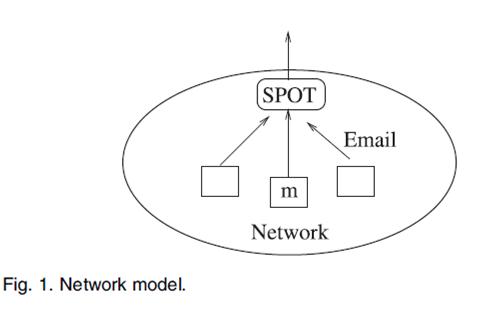An
Adaptive Cloud Downloading Service
ABSTRACT:
Video content downloading using the P2P approach is
scalable, but does not always give good performance. Recently,
subscription-based premium services have emerged, referred to as cloud
downloading. In this service, the cloud storage and server caches user
interested content, and updates the cache based on user downloading requests.
If a requested video is not in the cache, the request is held in a waiting state
until the cache is updated. We call this design server mode. An
alternative design is to let the cloud server serve all downloading requests as
soon as they arrive, behaving as a helper peer. We call this design helper
mode. Our model and analysis show that both these designs are useful for
certain operating regimes. The helper mode is good at handling high request
rate, while the server mode is good at scaling with video population size. We
design an adaptive algorithm (AMS) to select the service mode automatically.
Intuitively, AMS switches service mode from server mode to helper mode when too
many peers request for blocked movies, and vice versa. The ability of AMS to
achieve good performance in different operating regimes is validated by
simulation.
EXISTING SYSTEM:
CDN is a traditional solution based on deploying
servers at the edge of the network, near video access points. Scalability is a
limitation of CDN because the server capacity becomes a bottleneck when there is
a large number of concurrent peer requests.
DISADVANTAGES
OF EXISTING SYSTEM:
Video content distribution is a challenging research
problem because of its high bandwidth requirement and the fast growing video
population. In recent years, it is reported that Internet traffic is already dominated
by video.
In file sharing scenarios, however, dedicated server
is not commonly deployed for service capacity. Peers requesting unpopular
videos often suffer low downloading rate.
PROPOSED SYSTEM:
There are two generic service modes for cloud
servers. In the first mode, the cloud server is primarily focused on serving
the content already cached at the cloud storage system. Requests for content
not in the cache are blocked until such content becomes cached. The cloud
storage system updates its cache periodically to replace content without requests
by content with requests awaiting. We call this the server mode. An
alternative mode is the helper mode, in which the cloud server does not
block any requests.
For videos that are not cached, the cloud server
simply relay chunks from some peers to other peers, acting as a helper peer.
One contribution of our study is to compare these two modes analytically. The
results are interesting, in the sense that both modes can be advantageous for some
operating regimes - the server mode when video population is large compared to
cache size, and the helper mode when peer request rate is high compared to
server bandwidth. We integrate these two modes into a single adaptive cloud
downloading service.
ADVANTAGES
OF PROPOSED SYSTEM:
ü The
benefit is that more peers can contribute their upload capacity by switching
their state from waiting to downloading.
ü Server
mode is most efficient for dealing with large video population relative to the
cache size.
ARCHITECTURE:
ALGORITHM USED:
Automatic Mode Selection (AMS) Algorithm
SYSTEM
REQUIREMENTS:
HARDWARE
REQUIREMENTS:
·
System : Pentium IV 2.4 GHz.
·
Hard Disk : 40 GB.
·
Monitor :
15 inch VGA Colour.
·
Mouse :
Logitech Mouse.
·
Ram : 512 MB
·
Keyboard :
Standard Keyboard
SOFTWARE
REQUIREMENTS:
·
Operating System : Windows XP.
·
Coding Language : ASP.NET, C#.Net.
·
Database :
SQL Server 2005
REFERENCE:
Yipeng Zhou, Member, IEEE, Tom Z. J. Fu, Dah
Ming Chiu, Fellow, IEEE, and Yan Huang, “An Adaptive Cloud Downloading
Service”, IEEE TRANSACTIONS ON
MULTIMEDIA, 2013.






